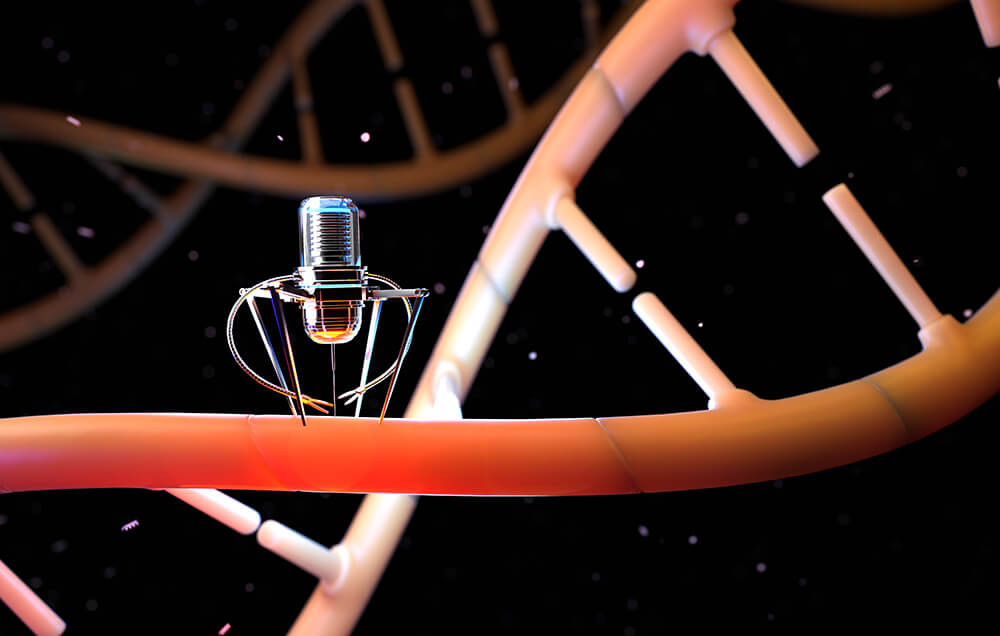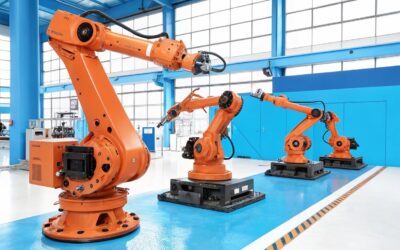The definition of a nanorobot indicates a system capable of remotely controlled movements and operations having nanometric or molecular dimensions, and in the future even atomic dimensions.
The main application of nanorobots is certainly medical, but recent developments have taken this technique into other fields of application such as military, aerospace and biology.
The title is primarily intended to be provocative and to emphasise the importance of multidisciplinary interaction, which today is essential to achieve objectives that are as interesting as they are necessary.
Stem Cells. Without going into the scientific merits, avoiding all ethical issues related to this delicate subject, stem cells, both embryonic and adult, are undoubtedly the new frontier of biology for the treatment of diseases such as cancer, Alzheimer’s, muscular dystrophy and many others, intervening at the base of the cell, trying to control its development and any malformations.
But here we are talking about robotics, and more precisely about nanorobots, i.e. tiny devices that can be controlled remotely in order to perform functions such as bringing localised chemical agents to the cellular level. The spirit of these lines is certainly not to compare the performance of stem cells with that of nanorobots, but rather to highlight and find food for thought in the latter’s fields of application, which can collaborate with cell biology to achieve highly coveted goals.
Below is an overview of the field to get an idea of the state of the art, together with various links to take you deeper into each aspect.
MAGNETICALLY MOVING NANOROBOTS
Many species in nature, such as magnetotactic bacteria, birds, bats, butterflies, lobsters and salmon, are able to fly or swim long distances by sensing navigational cues from geomagnetic fields. Some species such as, for example, the termite Amitermes meridionalis, even have the ability to reorient their bodies or nests based on geomagnetic information. Based on these physical principles, researchers Huaijuan Zhou, Carmen Mayorga-Martinez, Salvador Pané, Li Zhang and Martin Pumera explain in their article Magnetically Driven Micro and Nanorobots published by ACS Publication how it is possible to control these small devices by means of magnetic fields to carry out targeted therapies at the cellular level.

SWIMMING NANOROBOTS
A study developed by several universities and research centres, including the Department of Nanoengineering at the University of California, the Harbin Institute of Technology, China, and also the University of Haifa, Israel, has led to the construction of devices that mimic the movement of humans in water. Unlike previous nanorobots, which were able to move by means of externally manipulated magnets, the new nanodevices are in effect miniaturised robots with functioning legs.
ELECTRICALLY MOVING NANOROBOTS
At Drexel University, Philadelphia, a method has been developed that uses electric fields to help nanobots detect obstacles in their path and move nimbly in the area of interest, with applications that could include intracorporeal drug delivery and stem cell manipulation in the future.
All the nanodevices mentioned are being studied and tested in the laboratory and certainly not on humans, for the time being. The path to concrete application on humans is still long and will be studded with important milestones in the field of scientific progress.
DNA-RNA NANOROBOTS
- DNA-Robotics is working on a project to develop RNA-based nanorobotic devices that can be produced in cells to sense, compute and act upon intracellular signals. The aim of this research is to interface RNA-based nanorobotic devices with cell signalling pathways and to communicate the state to robotic devices outside the cell via DNA nanopores.
- A project developed by Carlos Castro, co-author of the study and associate professor of mechanical and aerospace engineering at Ohio State University, has the capability to create complex nanodevices with DNA strands managed with MagicDNA software
- Researchers from the California Institute of Technology together with the University of Twente, the Netherlands, and the German University in Cairo have created nanogrubs made of DNA strands, capable of lifting and moving microparticles.
- Anupama J. Thubagere and colleagues achieved a prototype molecular robot by assembling three main ‘building blocks’, each consisting of a handful of nucleotides (the repetitive units of which DNA is composed), a ‘leg’ with two ‘feet’, a ‘limb’ equipped with a ‘hand’, and a base segment capable of signalling to the machine the exact point at which the load is to be released.

Source: Ohio State University
NANOROBOTS TO REMOVE TOXINS IN THE BLOOD
Engineers at the University of California San Diego have developed tiny ultrasonic-powered robots that can swim through the blood, removing harmful bacteria along with the toxins they produce. The nanorobots are about 25 times smaller than the width of a human hair and can travel up to 35 micrometres per second in the blood when powered by ultrasound. These nanorobots could one day offer a safe and efficient way to detoxify and decontaminate biological fluids.
SWARM OF NANOROBOTS IN A LIVING ORGANISM
For the first time, the collective movement of a swarm of nanorobots in the organism of a living mouse has been observed. This is the result of a study published in the journal Science Robotics and conducted by the group of the Spanish Institute of Bioengineering of Catalonia coordinated by Samuel Sánchez, in collaboration with the Autonomous University of Barcelona.
NANOROBOTS AND THE TREATMENT OF CANCER
Researchers from the ETH Zurich and the Israel Institute of Technology have developed a magnetically controlled elastic polypyrrole nanowire about 15 micrometres long and 200 nanometres thick that, swimming in fluid biological environments at a speed of 15 micrometres per second, could be used to deliver drugs and be magnetically controlled to attack cancer cells.
As for the nanorobots used for drug delivery, i.e. as a vehicle for releasing substances inside the carcinoma, the models tested are of a different nature and move inside the body in different ways. Considering the structure and mechanism of operation, they are designed using a basic model, consisting of an arm and a ‘hand’ on which to place the active ingredient, which is the drug to be delivered.
Starting from this structure, it is also possible to create more complex ones, adding, for example, more arms, in the event that there is a need for the simultaneous release of several molecules or a more complex and targeted action.
THE CELLOIDS PROJECT
The European Celloids project, which started on 1 February 2021 with a deadline at the end of January 2026, aims to create nanobots that can move autonomously in all parts of the human body. As part of this project, researchers were inspired by the behaviour of the cells of the immune system, some of which are capable of continually changing their body shape to adapt to their environment, thus being able to penetrate all crevices of biological tissue.
WHAT IS A XENOBOT AND WHY IS IT SO SPECIAL?
Hussain Kanchwala explains in his article why Xenobots are so important. The Xenobot is a living organic robot made of living cells. Its configuration and style of locomotion are designed by evolutionary algorithms on a supercomputer. The first Xenobots were created from stem cells taken from Xenopus Laevis, a species of frog, after which it was named.

Sarah Moore reports in her article on recent research that has contributed to the creation of xenobots, tiny robots less than 1 mm long and made up of 500-1000 living cells. They have been created in a variety of basic shapes, including some with legs. Studies have shown that they can move in a linear or circular fashion, join with other xenobots to act collectively, move small objects and live for around 10 days.
CAN NANOROBOTS CONTROL OUR BRAINS?
The spirit of a science populariser is to avoid scaremongering and at the same time recount the potential of new technologies in order to prepare for their massive use.
As is often the case, technology is neither good nor bad, it is always the human being who is responsible for its use.
Researchers Prithiv Kumar and Albert Alukal, in their article ‘Control of Mind using Nanotechnology‘, describe how mental argumentation is an important parameter that is difficult to analyse using current techniques. To achieve this requires a technology as powerful as nanotechnology, thus achieving an unlimited combination of functions and properties of nerve cells.
Nanoparticles come in different materials, sizes and shapes. Sizes ranging from 1 to 100 nm, in the form of tubes, spheres, single, double or multiple layers, fullerenes with or without branches, and materials such as carbon, metal, ceramics, semiconductors, polymers and lipids.
Nanotechnology is a game changer in the pharmaceutical industry, in drug delivery systems, nanoscale capsules and medical instruments.
CAN NANOROBOTS MAKE US IMMORTAL BY 2040?
In an article a few years ago, futurist Ray Kurzweil speculated that robotic nanotechnology could significantly increase life expectancy, to the point of making us ‘immortal’, within a few decades. While waiting to see if and how this can happen, I leave you the link to the article.
NANOROBOTS AND THE MARKET
The market for nanobots is growing steadily and is estimated to reach $8.68 billion by 2025, according to research by Market Research Future (MRFR).
SLIME ROBOTS
These particular robots are not quite nanorobots due to their millimetre size, but they are noteworthy in that it will be possible to insert them into the human body to perform functions controlled by magnetic fields. In addition, they can move objects, take two ends of a wire and connect them, change shape, be split into several parts and reassemble without losing their characteristics. Professor Mengmeng Sun from the Chinese University of Hong Kong explains what this is all about in this video.
Some interesting links on the subject
Microscale Robotics Laboratory
Nanobots/Nanorobots Market Segment, Size, Share, Trends, 2027 | MRFR (marketresearchfuture.com)
Nanorobots | Research and Innovation (europa.eu)
An Overview of Nanobots and the Most Recent Developments (azonano.com)
Nanorobots: A Tiny Robot For Diagnosis And Treatment (cademix.org)








0 Comments